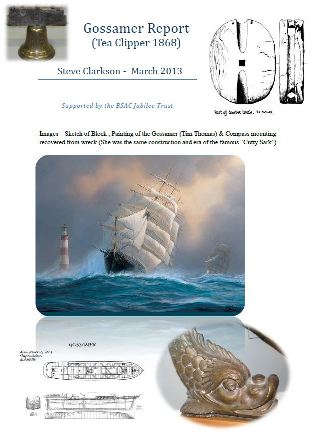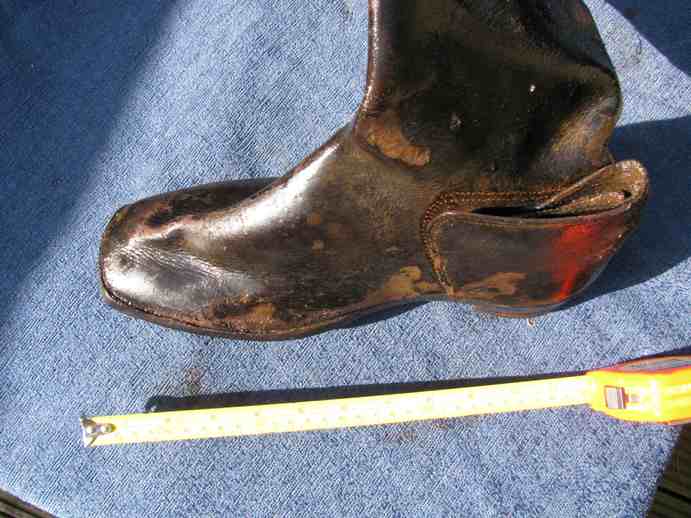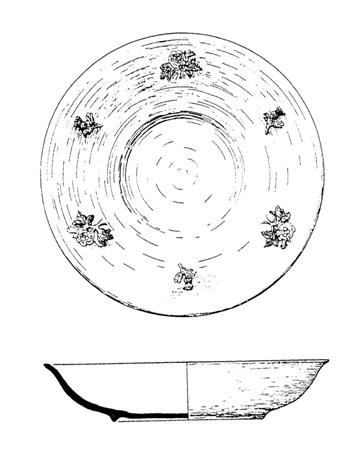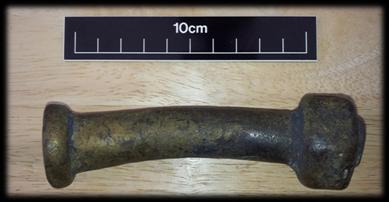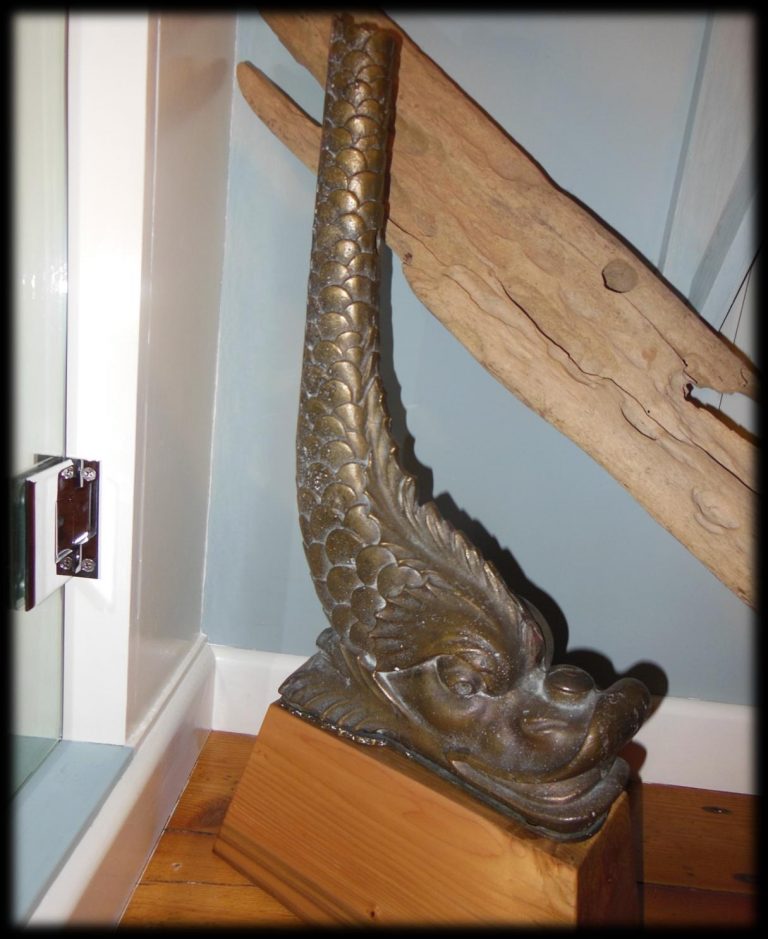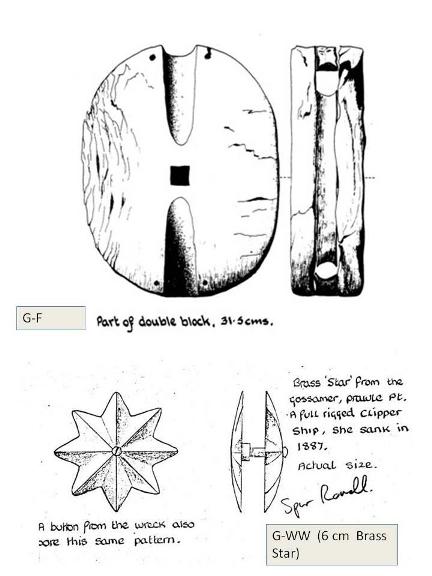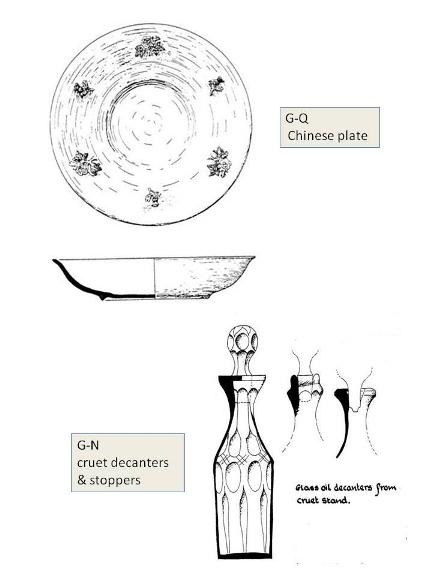Tea Clipper "Gossamer" 1869
N50 12.320 W3 42.663
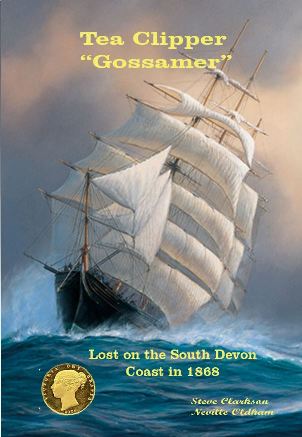
Book on the history of the Gossamer
Select the image above to order a copy of the book on Amazon
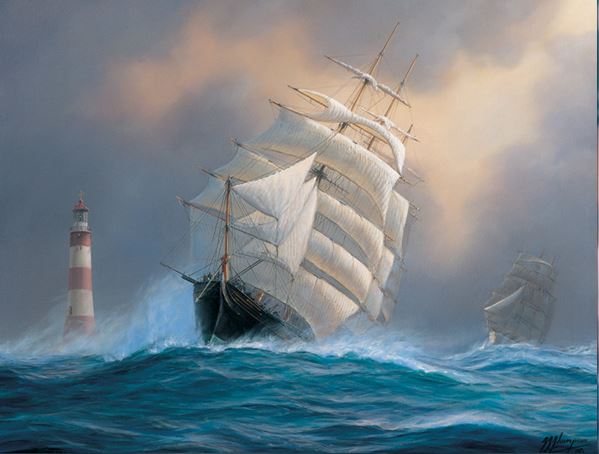
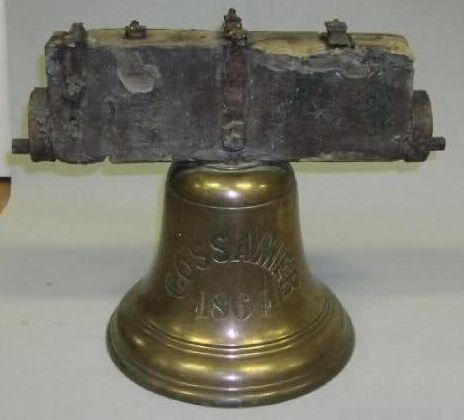
The Gossamer comes from the “Tea Clipper” era between 1843 to 1869 and was born out of the opening up of the tea trade with China. These were very fast ships for the time and averaged 17 to 21 knots. The Gossamer is unique in that it was a composite built ship with an iron frame and wooden planking which enabled the hull to still be covered in copper below the waterline .This meant the ship could carry more weight for its size having an iron frame and keep the hull free of marine growth. Boats of this construction were only made between 1862 and 1869 (a period of 7years). The most famous in the UK is the “Cutty Sark”, on display in London. The picture above is a painting of the Gossamer by marine artist Tim Thompson from Cornwall and prints can be obtained from www.timthompsonmarketing.com. The ships bell shown above was sold at auction. She was 735 Tons with a length of 181 ft and breadth of 30 ft. On her final voyage in 1868 it was owned by George Kipsel and six others. On 2nd December 1868 she left London on route to Adelaide in Australia carrying a general cargo and some passengers, when the Captain, on board with his new wife, handed over control to the Chief Officer & pilot before retiring to his cabin. They had had a discussion about whether or not they could get to Plymouth on the current tack and, despite the Chief Officer’s concerns, Captain Thomson told them to hold course. This decision and a slow response from the first mate and pilot resulted in the ship hitting the shore just to the east of Prawle Point in South Devon. Out of the thirty people on board only seventeen survived. Captain Thomson and his wife were two of the casualties and are buried in a local church near to the others who died that day.
These Tea Clippers, both built in the Americas and the UK took off when the trade routes were opened to China in 1853. The chart below shows the major routes involving the UK but this was extended to Australian ports later when “Clippers” started to take on passengers, particularly on route from London. The “Gossamer” was carrying passengers on her last voyage and the ones planning to embark at Plymouth were lucky not to be on board when she sank. The age of the tea clippers lasted from 1843 to 1869, but this brief reign was marked by such elegance and style for the ships and their cargo that it has gone down in history as a very productive period for trade. But by 1834 tea had become a freely traded item and Britain was seen as the main customer but it was the Americans who first saw the opportunity and started building “Tea Clippers” Based on an earlier type of ship called the Baltimore clipper, they were fast and slender, with a narrow hull that was deeper at the back than at the front, and acres of sails on tall masts. Some had as many as six tiers of sails to a mast, and a total of 35 sails. They got their name from the way that they ‘clipped off’ the miles. The first true tea clipper was “Rainbow”, designed by John W. Griffiths and launched in 1845. She made the journey from New York to Canton in 102 days – taking more than two weeks off the previous record for that trip. Their development was given another boost by the discovery of gold in California in 1848 and in Australia in 1851. People rushing to seek their fortunes wanted ships that would transport them as fast as possible The routes established with the opening of trade routes to China, are shown in the chart below. In the case of the Gossamers she would call into a South Australian port to drop off passengers from London prior to picking up the tea from China for the return journey. When “composite” Tea Clipper ship like the “Gossamer” were first introduced in the UK in 1862 ,the new design was not accepted until late 1863 when the Scottish Builders Association praised and accepted the design and Lloyd’s agreed it would comply with the fifteen year A1 standard. This design involved the creation of a iron frame which was then planked and the first one built in the Scottish A.A&S yard (The same yard who built the Gossamer) was the “John Ligett. She took two years to build and was launched in August 28th 1862 in the command of Captain H.Gamble sailing between London and Hong Kong. She was posted missing on a voyage from New York to London in October 1872. The tea clippers carried from 200 to 300 tons of shingle ballast, laid so that the chests of tea could be stowed on top of it. The Gossamer, which under the new rules based on the cubic capacity of the hull registered 735 tons, carried 1234 tons of tea at 50 cubic feet per ton, with a crew of 30. Vessels were now designed on scientific principles, and it may be doubted whether the qualities then desirable in a merchant sailing ship,speed, strength, carrying capacity, and economy,have ever been so successfully united as in these famous China tea clippers Many other “Tea Clippers” met their end on rocks and there are a few on the South Devon coast and these may well be the subject of another report. Composite Design This composite system combined the strength of iron frames with the advantage that the wooden planking could be coppered to prevent fouling, which was a serious problem as the ships were designed for speed which was significantly reduced if marine growth took hold on the hull. The iron frames meant that composite ships could carry large amounts of canvas sail with up to 35 sails. Composite ships were therefore some of the fastest ships afloat in the 1800’s. Great care had to be taken in building these vessels to prevent galvanic action between the bolts and iron frame so” Gutta-percha”(Natuaral latex) was used as a non-conductor; the planking was then fastened with yellow-metal screw bolts with counter-sunk heads, the holes being afterwards filled with a composition prepared for the purpose. Mr. Jordan obtained a patent for his invention, but it did not attract much attention until adopted in the construction of the Taeping, Eliza Shaw, Yang-tse, and Black Prince. From that time all the tea clippers were of composite build, though it was not until 1867 that the Committee of Lloyd’s Register issued rules for their construction These designs did have their problems due to the galvanic reaction between the different materials and there is some evidence of the insulation used on the bolts found on the Gossamer. They were reported to have broken up faster than other types of ship but there is no evidence of this. The photo below is of one of these bolts recovered from the wreck site. The diagram below shows an example of how the composite ship was constructed. Her Final Days On Wednesday 2nd December 1868 at 2:30pm the Gossamer left London bound for Adelaide with a general cargo and was due to pick up passengers at Plymouth. She was towed by the tug “Middlesex”. On board were Captain Thompson and his recent bride ,of two weeks , Barbara. There were accompanied by the Chief Officer, Peter Merrifield and the Pilot, Andrew Grant. They had been delayed by bad weather but eventually set off and made the Devon coast on Thursday the 10th when the wind veered from the north to a southwest gale. It is not totally clear what happened as accounts differed but the captain had had a conversation with his chief officer, Peter Merrifield about whether or not they would clear Start Point on their current tack and the captain thought they would so he told him to stay on the same heading and went below for a sleep having had very little rest over the past two days due to the severe weather conditions. At that point they were nine miles off Start Point. He left the task of sailing the ship to his chief officer along with the Pilot. When they neared Start Point the Chief Officer told the pilot that he did not think they would clear the land but the Pilot thought they would so they held the course but the chief officer eventually called the captain but it was too late as the leeway was such that she was unable to tack. They put one anchor down which had 540 ft (164m) of chain and this held for a while as they put down the second anchor. At this point they had already grounded the ship on a reef. Both anchors broke loose resulting in the ship drifting back into the rocks just 300 ft off the shore where they launched the boats which were destroyed in the surf. The coastguards at Prawle had watched the drama unfold and soon deployed a rocket launcher across the stricken ship. Word soon got out and rescuers appear on the beach. The captain had set a course for Plymouth and was hoping they would not have to put in another tack. The image below shows what could have happened in that last half hour before hitting the shore. She hit the rocks with 540ft of chain out on the second anchor. Eleven people lost their lives but some of these could have possibly been saved. One of the negro crew, who was a good swimmer, had offered to take the captain and his wife ashore and the captain declined the offer. His wife, Barbara, was swept into the sea and Captain Thomson jumped in to save her but both were drowned in the raging surf. Nineteen of the crew and passengers were saved, some by using the line that had been deployed from the shore and others by swimming ashore. There was a report that the ship had broken up very quickly and the deck ended up on the shore in one piece. Although the wood and iron have disappeared from the wreck, the bolts remain their original position in the crud. This does not support the theory that the wreck broke up quickly. It is difficult to tell who was ultimately to blame but, at the inquest held by Mr Bone, of Devonport, and the coroner at St Sylvester Church, Chivestone. Andrew Grant. The Pilot, was found guilty of manslaughter and sent for trial in Exeter. On March 7th 1869 he was found not guilty and the plunder the £50,000 worth of general cargo including ropes, sacks, casks, calico, furniture, shoes, boots (See Artefacts), nails, blankets, cheese and bonnets. The plan was to get all this cargo back to London to sell but such was the problem of stopping the looting, all of the cargo was sold off by auction on the green adjacent to the wreck. Over one thousand people flocked to the area but the auctioneer was only selling the cargo, and parts of the ship, in large lots creating a riot in the crowds who eventually convinced him (By threatening him) to sell the items in smaller lots. Some of the locals were caught looting and fined. The ships bell was amongst the items sold.
